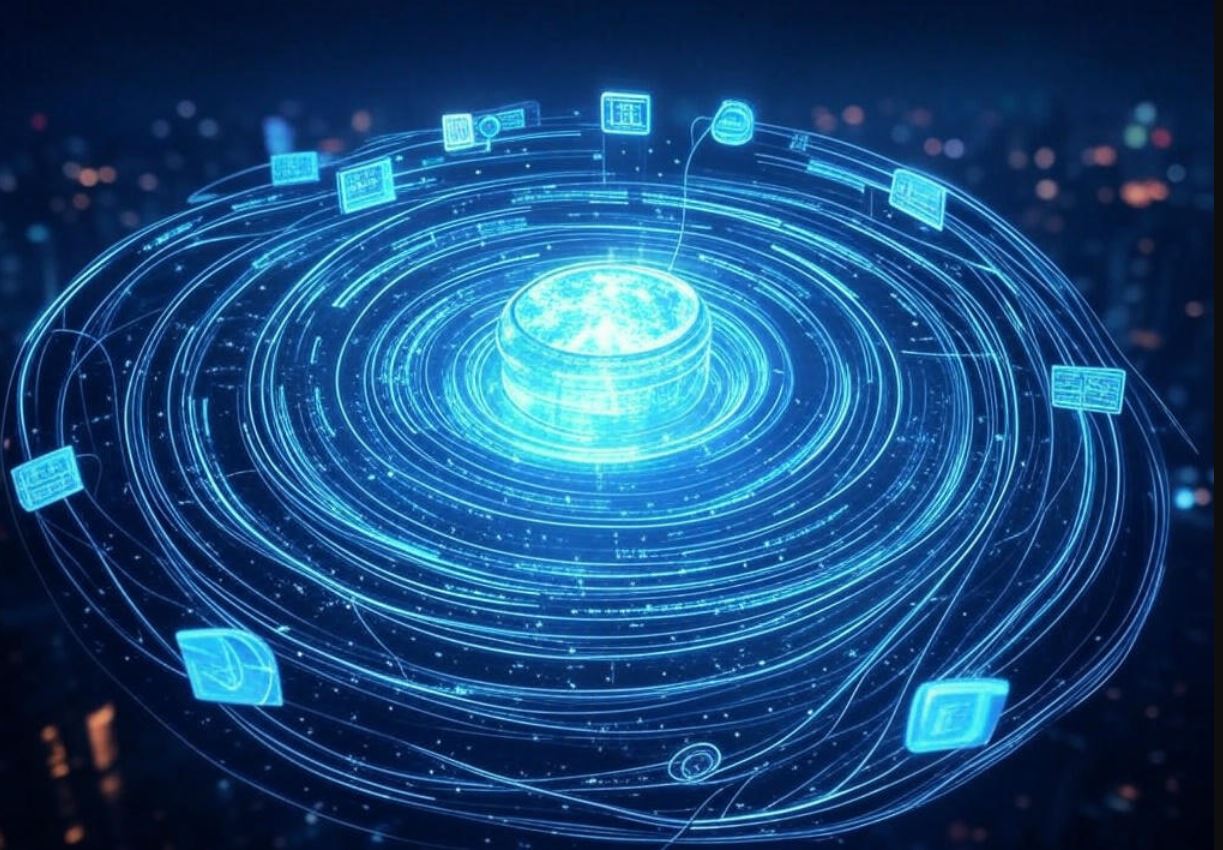Picture this: you’re sitting at your computer, and instead of wrestling with complex photo editing software or spending hours tweaking image generation prompts, you simply describe what you want in plain English. “Hey, remove that person from my group photo” or “Put this sofa in that living room and make it match the lighting perfectly.” Within seconds, your vision becomes reality. This isn’t science fiction anymore – it’s Google’s latest breakthrough called Gemini 2.5 Flash Image, and it’s about to revolutionize how we create and edit visual content.
What Makes Gemini 2.5 Flash Image Different?
Google just launched Gemini 2.5 Flash Image (playfully nicknamed “nano-banana”), their most advanced image generation and editing model yet. But here’s what sets it apart from other AI image tools you might have tried: this isn’t just another image generator that spits out random pictures based on keywords. Instead, it’s like having a brilliant artist, photo editor, and creative director all rolled into one AI that actually understands what you’re asking for.
The magic lies in its conversational approach. You can blend multiple images into a single image, maintain character consistency for rich storytelling, make targeted transformations using natural language, and use Gemini’s world knowledge to generate and edit images. Think of it as having a creative assistant that not only knows every photography technique but also understands history, geography, science, and culture – all while being able to edit images with surgical precision.
Why This Launch Actually Matters
When Google first introduced native image generation in their earlier Gemini models, users loved the speed and cost-effectiveness. But there was a catch – people gave feedback that they needed higher-quality images and more powerful creative control. Google listened, and Gemini 2.5 Flash Image is their response to these demands.
What’s remarkable is how they’ve managed to keep the accessibility while dramatically boosting the capabilities. The model is priced at $30.00 per 1 million output tokens with each image being 1290 output tokens ($0.039 per image). To put that in perspective, you’re looking at less than four cents per image – that’s incredibly affordable for professional-grade AI image generation and editing.
The Four Superpowers of Gemini 2.5 Flash Image
1. Character Consistency That Actually Works
One of the biggest headaches with AI image generation has always been consistency. You generate a character you love in one image, but when you try to create more images with the same character, they look completely different. It’s been frustrating for creators, marketers, and anyone trying to build visual narratives.
Gemini 2.5 Flash Image solves this with what feels like magic. You can now place the same character into different environments, showcase a single product from multiple angles in new settings, or generate consistent brand assets, all while preserving the subject. Imagine creating a series of marketing materials featuring the same mascot, or developing a comic book where your characters actually look the same from panel to panel.
The implications are huge for businesses. You could create an entire product catalog showing the same item in different settings, or develop a brand campaign with consistent character appearances across multiple platforms. Google has even built a template app that demonstrates these capabilities, making it easy for anyone to experiment with character consistency.
2. Precision Editing That Understands Context
Here’s where things get really impressive. Gemini 2.5 Flash Image enables targeted transformation and precise local edits with natural language. The model can blur the background of an image, remove a stain in a t-shirt, remove an entire person from a photo, alter a subject’s pose, add color to a black and white photo, and much more.
But it’s not just about what it can do – it’s about how naturally you can communicate with it. Instead of learning complicated editing tools or spending time masking and selecting areas, you just tell it what you want changed. The AI understands context, spatial relationships, and even lighting conditions to make edits that look natural and professional.
This isn’t just convenient for casual users; it’s potentially revolutionary for professional workflows. Photographers could quickly clean up images, marketers could adapt existing visuals for different campaigns, and content creators could iterate on ideas without technical barriers.
3. World Knowledge Integration
This might be the most underrated feature. Historically, image generation models have excelled at aesthetic images, but lacked a deep, semantic understanding of the real world. With Gemini 2.5 Flash Image, the model benefits from Gemini’s world knowledge.
What does this mean practically? The AI doesn’t just create pretty pictures – it understands concepts, relationships, and real-world context. If you ask it to create an image of ancient Roman architecture, it won’t just generate something that looks old and columned. It will incorporate actual architectural principles, historical accuracy, and cultural context.
Google showcases this with an educational app that can read and understand hand-drawn diagrams, help with real-world questions, and follow complex editing instructions all in one step. This opens up possibilities for educational content, technical documentation, and any application where accuracy matters as much as aesthetics.
4. Multi-Image Fusion Magic
The ability to seamlessly blend multiple images is perhaps the most visually striking feature. Gemini 2.5 Flash Image can understand and merge multiple input images. You can put an object into a scene, restyle a room with a color scheme or texture, and fuse images with a single prompt.
This goes beyond simple copy-and-paste operations. The AI understands lighting, perspective, shadows, and textures to create fusions that look photographically realistic. Interior designers could drop furniture into room photos, e-commerce businesses could showcase products in different environments, and content creators could build complex scenes from simple components.
Real-World Applications That Change Everything
The practical applications are staggering. Developers have already explored areas like real estate listing cards, uniform employee badges, or dynamic product mockups for an entire catalog—all from a single design template.
Think about a real estate company that could automatically generate hundreds of property listing cards with consistent branding but unique property photos. Or consider a retail business that could instantly create product mockups for their entire inventory in any setting or style. The time and cost savings are enormous.
For creative professionals, this technology removes technical barriers that have traditionally separated ideas from execution. A novelist could visualize their characters and scenes, a marketer could rapidly prototype visual campaigns, and an educator could create custom illustrations for any concept.
Getting Started: It’s Easier Than You Think
Google has made accessibility a priority. The model is available right now via the Gemini API and Google AI Studio for developers and Vertex AI for enterprise. But even if you’re not technically minded, Google has created template apps that demonstrate different capabilities.
They’ve also made significant updates to Google AI Studio’s “build mode” where you can literally say something like “Build me an image editing app that lets a user upload an image and apply different filters” and watch it create a functional application. When you are ready to share an app you built, you can deploy right from Google AI Studio or save the code to GitHub.
The technical implementation is straightforward too. The API integration requires just a few lines of code, making it accessible for developers at any level. Whether you’re building a mobile app, web service, or desktop application, integrating these image capabilities is remarkably simple.
The Responsible AI Approach
One concern with powerful AI image generation is the potential for misuse or the spread of misleading content. Google addresses this proactively: All images created or edited with Gemini 2.5 Flash Image will include an invisible SynthID digital watermark, so they can be identified as AI-generated or edited.
This watermarking system helps maintain transparency and accountability in an era where distinguishing AI-generated content from human-created content is increasingly important. It’s a responsible approach that allows for innovation while addressing legitimate concerns about synthetic media.
What This Means for the Future
Gemini 2.5 Flash Image represents more than just another AI tool – it’s a glimpse into a future where the gap between imagination and creation essentially disappears. We’re moving toward a world where anyone can be a visual creator, where technical skills become less important than creative vision, and where iterating on ideas becomes as fast as thinking them.
The partnerships Google has established also signal broad adoption. OpenRouter.ai has partnered with Google to help bring Gemini 2.5 Flash Image to their 3M+ developers everywhere. This is the first model on OpenRouter – of the 480+ live today – that can generate images. Additionally, fal.ai is making the model available to the broader developer community.
Insights
Google’s Gemini 2.5 Flash Image isn’t just an incremental improvement in AI image generation – it’s a fundamental shift in how we think about visual creation and editing. By combining natural language understanding, world knowledge, precision editing capabilities, and multi-image fusion in an accessible and affordable package, Google has created something that feels genuinely transformative.
Whether you’re a developer looking to add visual capabilities to your applications, a business wanting to scale visual content creation, or a creative professional seeking to remove technical barriers from your workflow, this technology offers genuine value that goes far beyond novelty.
The fact that Google has made it immediately available, competitively priced, and built comprehensive tooling around it suggests they’re serious about making this accessible to everyone. In a world where visual content drives engagement across every platform and medium, having AI assistance that truly understands and executes your creative vision isn’t just convenient – it’s becoming essential.
As we look toward the future, tools like Gemini 2.5 Flash Image point toward a world where the primary limitation on visual creativity won’t be technical skill or expensive software, but simply imagination itself. And that’s a future worth getting excited about.



